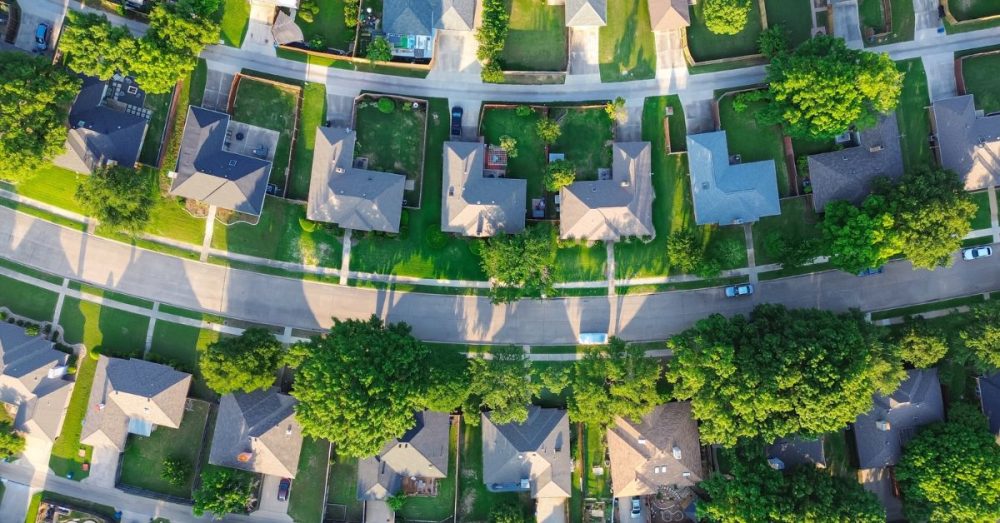The City of Dallas has been reworking ForwardDallas, a comprehensive land use plan that, in part, proclaims that increasing density could achieve “affordable housing.”
The prospect of allowing multifamily units into single-family housing districts has elicited mixed responses from Dallas residents, per The Dallas Express.
Some residents agree with the plan.
“I ardently support ForwardDallas. For Dallas to grow, Dallas needs more housing, specifically more diverse housing. You can not remove 42% of Dallas [single families] and develop a sustainable solution. City leaders have the opportunity to build their cities and build for the future,” said resident David Chen at a Dallas City Plan Commission meeting in July.
Other residents have disagreed.
“This isn’t about affordable housing; this is about more taxes coming into the city,” said Rob Thomas at the meeting. “I find the current approach disrespectful and manipulative, and pushing affordable housing as a front for more taxes is a threat.”
However, an August study by Zillow shows that 74% of Dallas residents believe allowing more multifamily housing options in single-family neighborhoods would positively affect “affordable housing” options.
Additionally, 64% of polled Dallas residents said having more affordable housing in the community is more important than free parking. Some 73% of Dallasites noted that homeowners should be allowed to convert their homes to add housing units, such as turning a single-family residence into a duplex or adding a mother-in-law unit.
Some 48% of Dallas residents said housing affordability is “very” or “extremely important” when deciding whom to vote for in the upcoming presidential election.
In addition to updating ForwardDallas, the City developed a new housing policy called Dallas Housing Policy 2033 (DHP33) in March 2023, as reported by The Dallas Express.
DHP33 runs off of seven “equity pillars”:
Equity Strategy Target areas – Identifying specific disparities in housing opportunities and reducing them with a targeted approach
Citywide Production – Increasing production to improve housing affordability for all incomes across Dallas
Citywide Preservation – Preserve already existing housing to increase affordability
Infrastructure – Prioritize infrastructure investments
Collaboration and Coordination – Maximize the impact of partnerships with stakeholders by aligning strategies and resources
Engagement – Create diverse and multi-lingual avenues of communication with residents
Education – Develop a city-wide, collaborative campaign to increase housing affordability
This year, DHP33 created a housing task force to represent a diverse range of Dallas residents to help inform City staff on the community’s concerns for affordable housing projects, per DX.
According to a recent memorandum from DHP33, the team plans to completely change the City’s approach to housing.
“Housing has traditionally operated in a manner that was reactive, rather than proactive, to developer funding requests and processing applicant needs for home repair and homebuyer assistance,” reads the memo. “DHP33 has shifted Housing’s approach on implementation actions to be more proactive to achieve greater opportunity and equity for Dallas residents.”
By the end of September, HR&A Advisors plan to draft an 18-month and 5-year action plan and prepare an analysis of housing needs in Dallas to help DHP33 align its goals with the plans.
Zooming out to consider Texas as a whole, the state needs to construct more than 300,000 additional homes to address housing affordability, which 90% of Texans acknowledge is a significant problem.
In a recent Texas housing trends survey, 56% of those polled say the cost of housing represents a financial strain, and 38% say it is a major source of strain, as reported by The Dallas Express.
As the Lone Star State’s population skyrockets, home builders have been unable to keep up.
In a recent report published by Comptroller Glenn Hegar, Texas was 306,000 homes short of what was needed in 2023, the second highest in the country, falling second to California.
The greatest shortages in homes are those that middle-income buyers can afford.
The report says that the housing shortage crisis can be traced back to the 2008 financial crash. Fewer homes were built in Texas between 2008 and 2018 than in any decade since the 1960s, leading to an estimated shortage of nearly 3.8 million housing units for sale or rent in 2019.
Following 2008, Texas saw a 61% drop in building permits.
While Texas did boast a resilient recovery after the financial crisis, clocking in as the only state to see an increase in building permits in 2023 compared to pre-financial crisis levels, the COVID-19 pandemic’s financial strain in 2020 skewed the state’s comeback.
Beginning in the summer of 2020, Texas saw a surge in home prices alongside a significant rise in housing demand.
“In addition to supply strains, home price pressures were worsened by the multitude of economic shocks and changes in consumer behavior spurred by the pandemic, creating a ‘perfect storm’ that rapidly reduced affordability levels,” reads the report.
Mortgage rates rose to a 23-year high of 7.79% in October 2023, following the Federal Reserve’s raising of interest rates.
With housing prices high and housing supply low, millions of Texans are left struggling.
In 2022, a record-high 22.4 million renters nationwide spent more than 30% of their income on rent and utilities. For every extremely low-income renter household in America, there are only 33 affordable and available rental homes. Texas ranks lower, with only 25 affordable rental homes.
Texas is ranked 46 out of 51 (including all U.S. states plus the District of Columbia) in housing affordability for extremely low-income renters.


